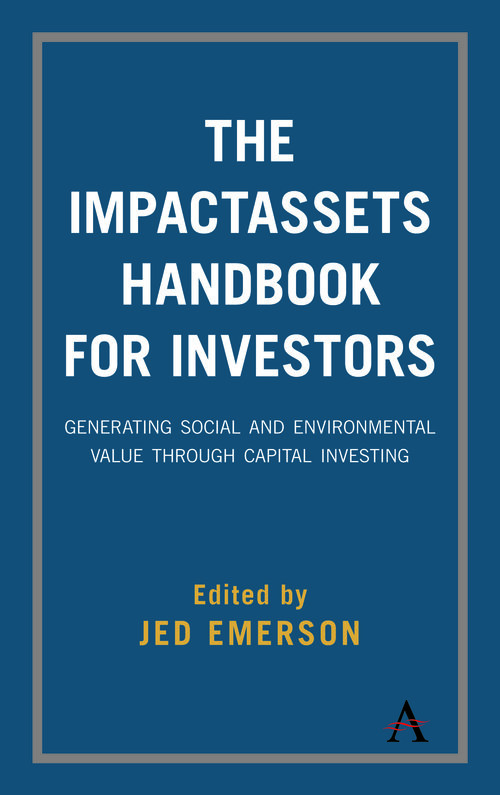The opportunities for putting investment capital to work for environmental, social, and financial gain have never been greater. Impact investing has matured to the point that there are even sectors within the sector; offerings span from industrial applications to social applications to financial applications. But for many early stage impact entrepreneurs, one of the most critical sources of financing is the seed stage. It’s the first outside money they will take in and is often a bridge to fund further research or product development, build a management team or other foundational needs.
For many impact entrepreneurs, the seed stage is the first outside money they will take in. So seed-stage investing can be high impact, but it’s not for the faint of heart. This is an intrinsically risky stage of the business. Firms are barely investment ready, sourcing and monitoring deals is expensive, and investors trying to diversify by allocating funds to several investments conclude it is more of an art than a science.
So how should an impact investor take the leap into seed-stage impact investing? Below is an excerpt from“The ImpactAssets Handbook for Investors,” (Anthem Press, 2017) highlighting three ways to participate in this exciting investment sector.

“The ImpactAssets Handbook for Investors: Generating Social and Environmental Value Through Capital Investing” (Anthem Press 2017).
Finding a seed-stage fund can be a way to reach a large, professionally managed portfolio of ventures, allowing investors to place more capital both better and faster. A fund may make upwards of 20 company investments, and may accept as little as $50,000 minimums (though many will be higher than this).
Seed funds anticipate many of their investments will fail; they know the ventures will require extensive mentoring and support; and they are willing to accept proxies as evidence of an entrepreneur’s capability and potential. Seed funds have found their best investments are often sourced by referrals from prior investees. Many of the strongest prospects don’t identify as social entrepreneurs or even realize there are investors specifically seeking social or environmental return. An entrepreneur getting a new business off the ground oftentimes looks to peers for actionable business advice rather than spending time to understand the landscape of investors. For this reason, established entrepreneurs often have the first glimpse into the next great businesses. To identify promising early-stage deals, seed funds have built field networks, in addition to their portfolio companies, to gather this street-level intelligence. All in all, funds can add a lot of value to investors.
For those investors who have a high level of appetite to do direct company investments but need help in sourcing and diligence, an accelerator program can be good way to tap into an ecosystem of investment deals, ride along with high-engagement support programs, and find co-investors to share in diligence. However, though leveraging programs and networks may help reduce some of the pain points, investors are still left making somewhat sizable investments. There is increasing viability in the area of direct investing, with the JOBS Act increasing access for non-accredited investors to direct company investments, and development of crowdfunding infrastructure to drive down per-deal sizes to as little as $5,000.
For those investors with a high level of appetite for direct company investments but need help in sourcing and doing due diligence, an accelerator program can be a good way to tap into an ecosystem of investment deals, ride along with high-engagement support programs, and find co-investors to share in diligence.
The table below is an informational selection of seed funds and accelerators with impact orientation, and should be viewed only as a jumping-off point for deeper exploration of current options (as the landscape is quickly evolving).
|
ORGANIZATION |
WEBSITE |
HQ LOCATION |
| Agora Partnerships | agorapartnerships.org | Nicaragua/DC |
| Ashoka | ashoka.org | Washington, DC |
| Better Ventures | better.vc | Oakland, CA |
| Civic Accelerator/Points of Light | cvcx.org | Atlanta, GA |
| Code for America | codeforamerica.org | San Francisco, CA |
| Echoing Green | echoinggreen.org | New York, NY |
| Fledge | fledge.co | Seattle, WA |
| Global Social Benefit Incubator | scu.edu/socialbenefit/ entrepreneurship/gsbi/ | Santa Clara, CA |
| GoodCompany Ventures | goodcompanygroup.org/ residency/program | Philadelphia, PA |
| Investors’ Circle/Patient Capital Collaborative | investorscircle.net | Durham, NC |
| IDEAx Accelerator/Idea Village | ideavillage.org | New Orleans, LA |
| Impact Engine | theimpactengine.com | Chicago, IL |
| NESsT | nesst.org | San Francisco, CA |
| New Ventures | new-ventures.org | Washington, DC |
| Rock Health | rockhealth.com | San Francisco, CA |
| Unreasonable Institute | unreasonableinstitute.org | Boulder, CO |
| VentureWell | venturewell.org | Boston, MA |
| Village Capital | vilcap.com | Atlanta, GA |
ImpactAssets has seen an increasingly wide range of its clients using their donor-advised funds (DAFs) to reach both seed funds and direct company investments in concert with accelerator relationships. Because DAFs aggregate among multiple accounts, they can drive down minimums even further. And, since individuals receive a tax deduction when they open a DAF (since it is in fact a charitable donation), one might view the tax benefit as an initial “return” of sorts at the point of investment, and then have more support for patience over the long term that these early-stage investments demand.
Investing in early-stage impact businesses requires specific, often industry- or market-level expertise on the part of the investor, as well as portfolio diversification. Therefore, this type of investing has intrinsic challenges for small and large investors alike. Simply put, it is not for the faint of heart. But seed-stage investing is at least plausible — and increasingly viable for those who find it compelling — by leveraging seed funds, accelerator programs, and investor networks that can provide support, reduce investment sizes, and bring great diversification to the investor, and by exploring new modalities available through crowdfunding platforms and donor-advised funds that are similarly aligned with alleviated pain points.
Accelerators are iterating their models to more accurately match entrepreneurs with investors and providing ongoing services to support follow-on financing. Additionally, relationships between seed funds and accelerators which provide a more immediate and ongoing feedback loop between entrepreneurs and investors are being developed on top of the more efficient vetting resulting from accelerators sharing experiential knowledge of the teams and their ventures.
When all is said and done, there remains a tremendous opportunity for innovation and for intermediaries to alleviate the friction in seed-stage impact investing. A small shift in the allocation of capital can make a significant difference, and it is the authors’ hope that new products and services will be developed to support increased seed-stage impact investing. Directing a steady flow of capital toward promising early-stage ventures is critical, for otherwise how will we see the great companies of tomorrow get funded today?






